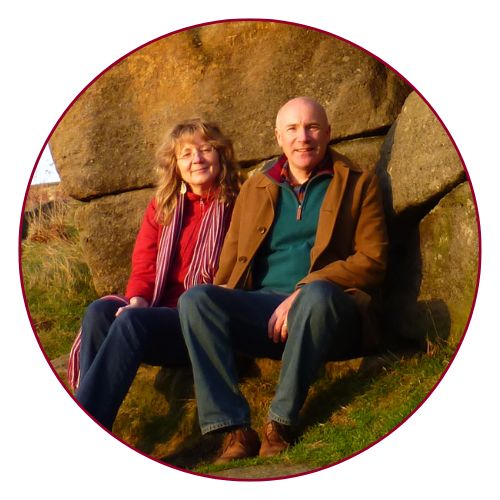Ascott House and Gardens
If you're looking for a lovely day out in the Home Counties, you would do well to put Ascott House and Gardens on your to-do list. Ascott is set in a 3200 acre estate on the Buckinghamshire/Bedfordshire border and is looked after by the National Trust. Formerly a Jacobean farm house, it has been extended and developed into a country house by the Rothschild family and now houses the Ascott collection of fine paintings, furniture, and oriental porcelain.
The gardens cover 30 acres and are of winter garden design as the family initially used the house for hunting parties. As the house is still used by the Rothschild family the National Trust only opens the house and garden between March and September.
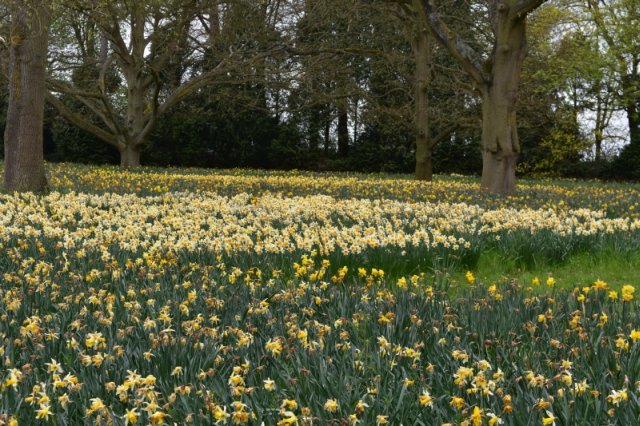 Sea of Daffodils © essentially-england.com
Sea of Daffodils © essentially-england.comWe visited on a Friday in late April and were greeted by a sea of yellow daffodils gently swaying under a canopy of trees as soon as we walked through the garden gates. First impressions were that we should have come earlier in the season as the bright yellow flowers were just past their best. However, as we wandered around the gardens we soon changed our mind. Spring might actually be the best time to visit Ascott House.
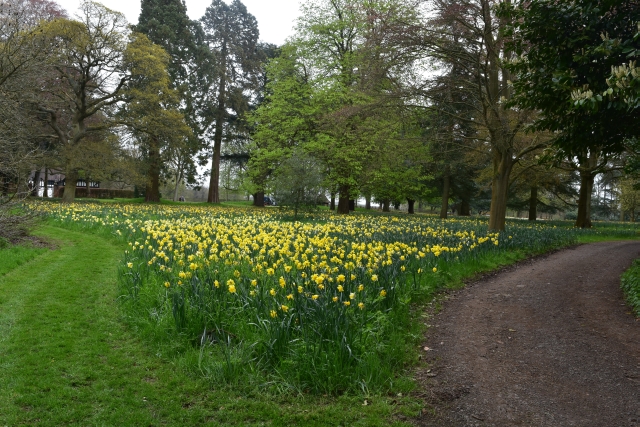 Ascott House and Gardens
Ascott House and Gardens © essentially-england.com
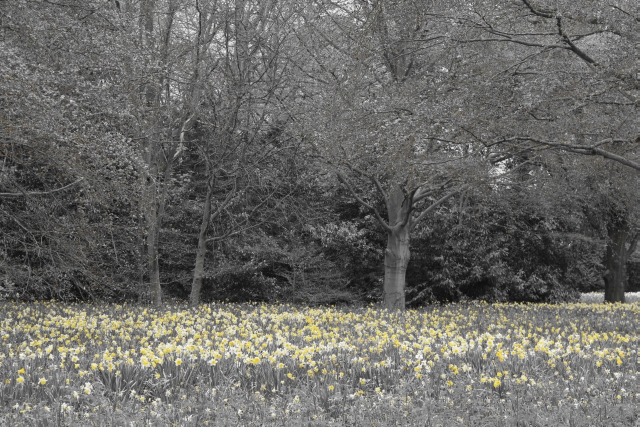 Ascott House and Gardens
Ascott House and Gardens © essentially-england.com
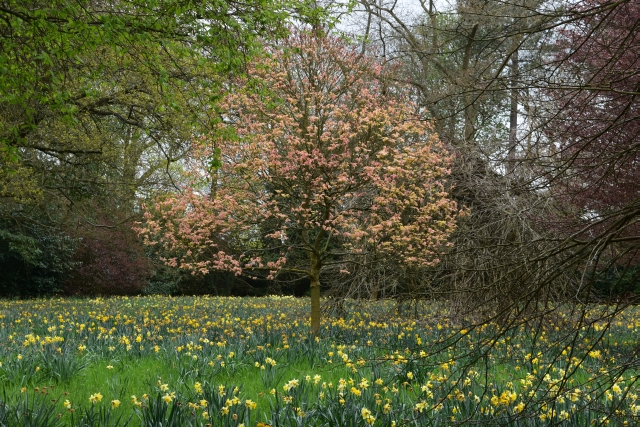 Ascott House and Gardens
Ascott House and Gardens © essentially-england.com
Paths wound under the trees and between the daffodils giving us the chance to relax in a beautiful spring time scenery. This was my first outing as Essentially England photographer with my new photographic toy, and the beautiful gardens offered lots of opportunities to explore the new camera.
Found among the daffodils were Fritillaria, which we'd last spotted wandering the water meadows at Cricklade. Here, they added dots of purple and pale cream to the sea of yellow, like little splashes of contrasting colour.
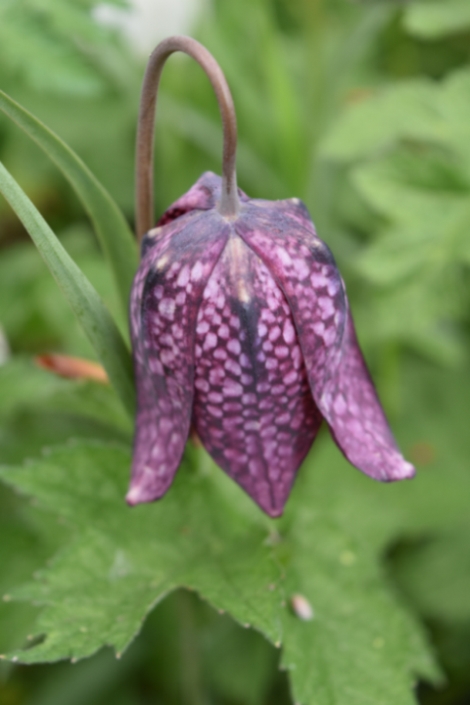 Purple Fritillary
Purple Fritillary © essentially-england.com
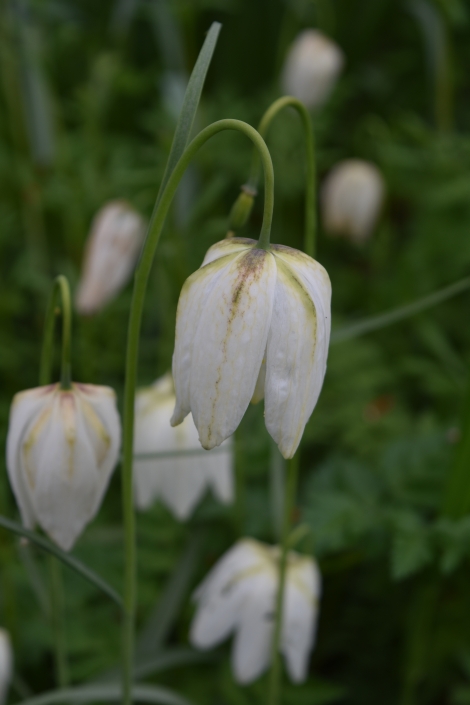 White Fritillary
White Fritillary © essentially-england.com
The garden is a mix of formal and informal, split into rooms by hedging and trees. We couldn't just walk through a room, we had to stop and turn around otherwise we would miss another detail. The rooms had wonderfully evocative names such as Scented Walk, Magnolia Dell, and Coronation Grove.
 Ascott House © essentially-england.com
Ascott House © essentially-england.comAscott House isn't a single building. It's a charming jumble of additions. The rear elevation gives a good idea of how Ascott House was extended ever since, in 1874, architect George Devey was commissioned to enlarge the house. It became a lifetime's work as the house was continuously modifed through the 19th century. The result is a sprawling building that seems to have grown and grown as time went by.
The garden design is equally elaborate, with many architectural features like a skillfully cut box hedge sun dial, the Ascott Circle, and the Venus Fountain. And there's beautifully cut topiary simply everywhere.
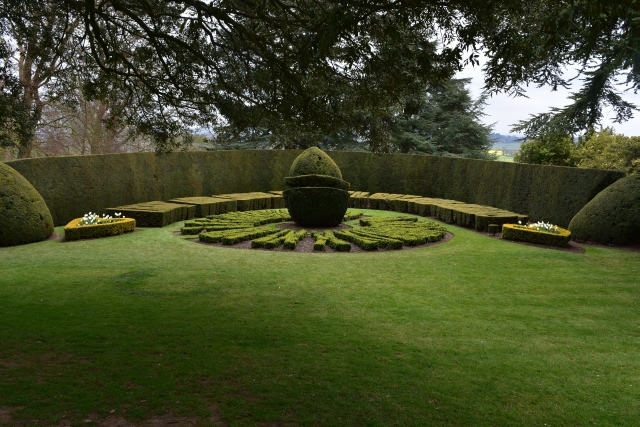 © essentially-england.com
© essentially-england.com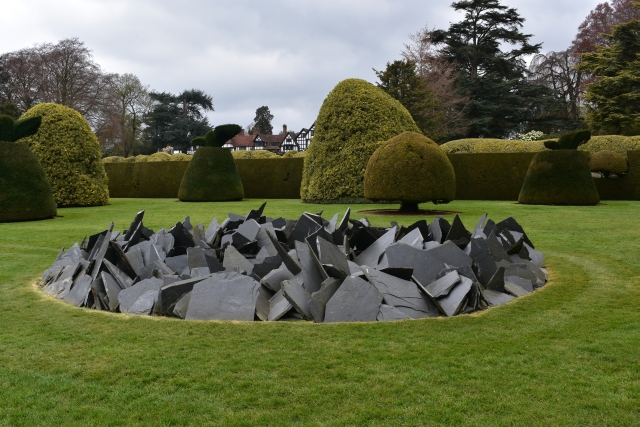 © essentially-england.com
© essentially-england.com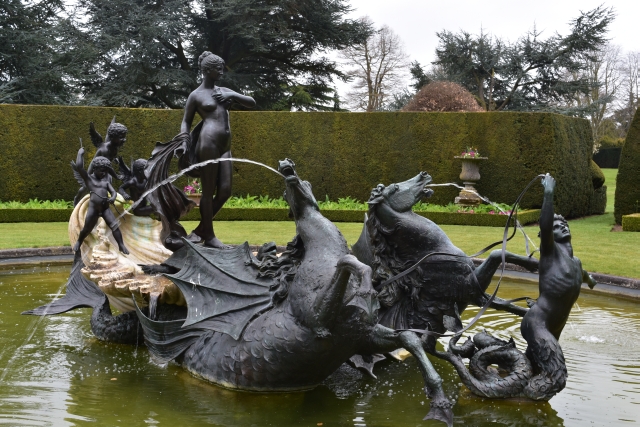 © essentially-england.com
© essentially-england.comA highlight of the garden at this time of year was the Dutch Garden. Planted with thousands of tulips, which were at there best right then, it made a cheerful colour display. You could easily while away time here relaxing to the sound of the birds in the trees and the tinkle of the Eros fountain. (And take your hat off to the gardeners, who had done an amazing job!)
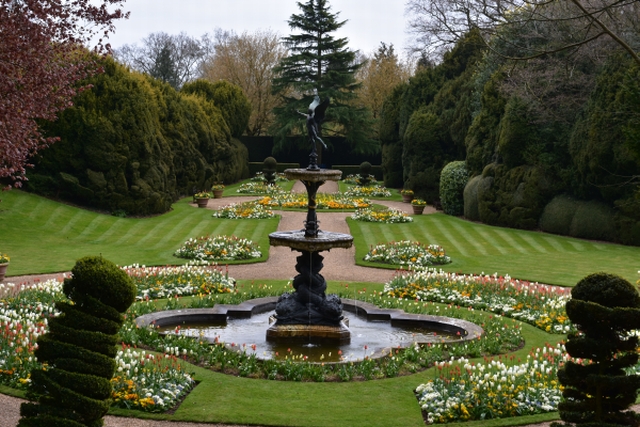 The Colourful Dutch Garden of Ascott House in Springtime © essentially-england.com
The Colourful Dutch Garden of Ascott House in Springtime © essentially-england.com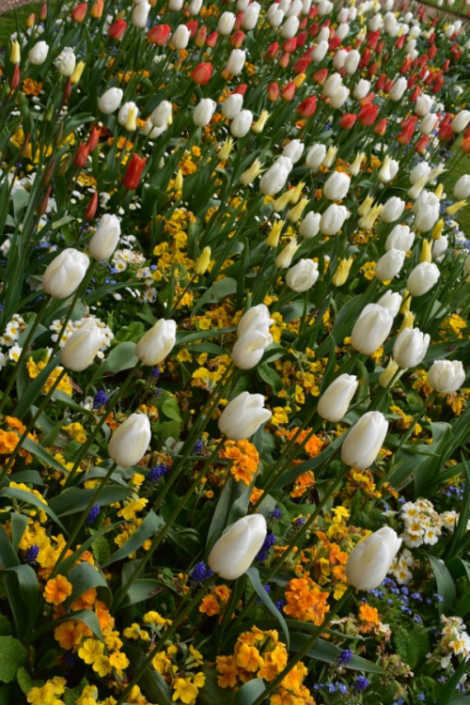 © essentially-england.com
© essentially-england.com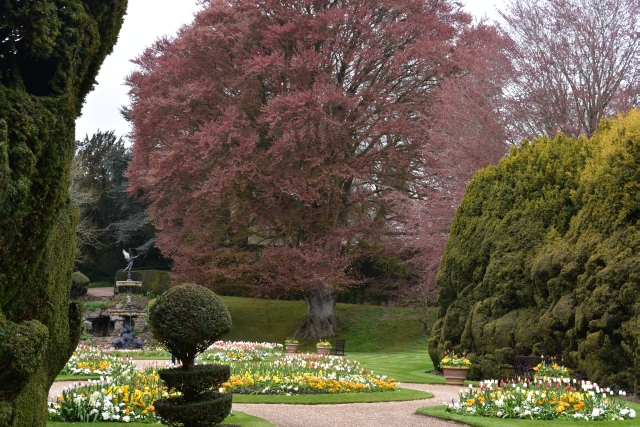 © essentially-england.com
© essentially-england.comAnother favourite of ours was the Chinese Dell, which is soft and informal after the precise patterns of hedges and tulip beds. A path cuts through long grass with an abundance of daffodils, tulips, bluebells, and fritillaria. For some reason it reminded me of the multicoloured Dolly Mixture sweets I used to eat as a child.
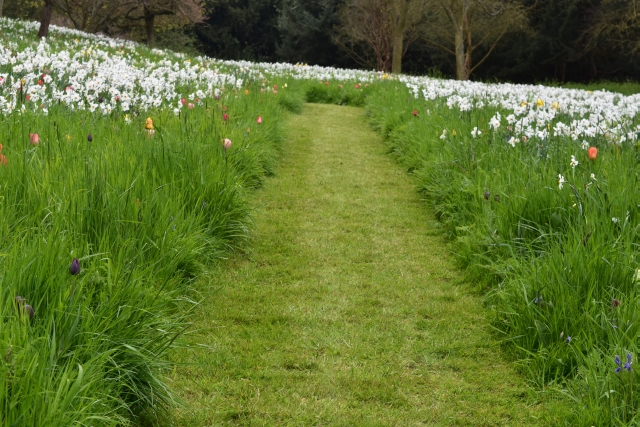 © essentially-england.com
© essentially-england.com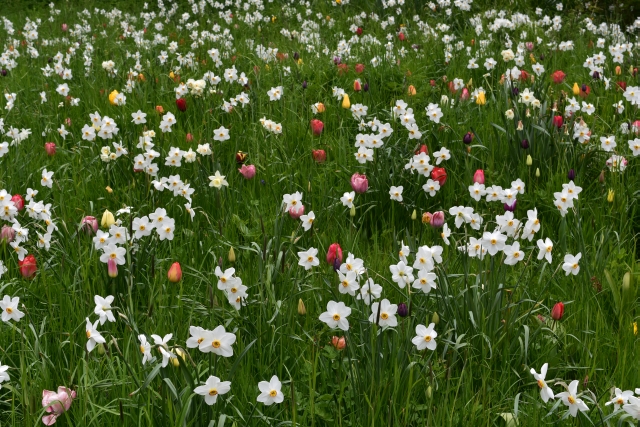 © essentially-england.com
© essentially-england.com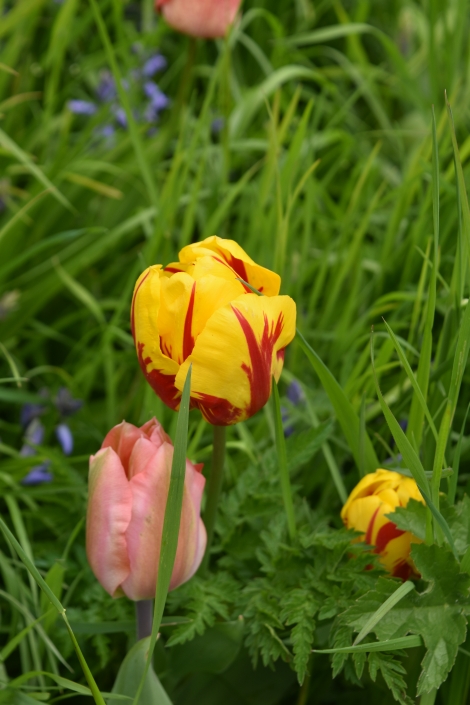 © essentially-england.com
© essentially-england.com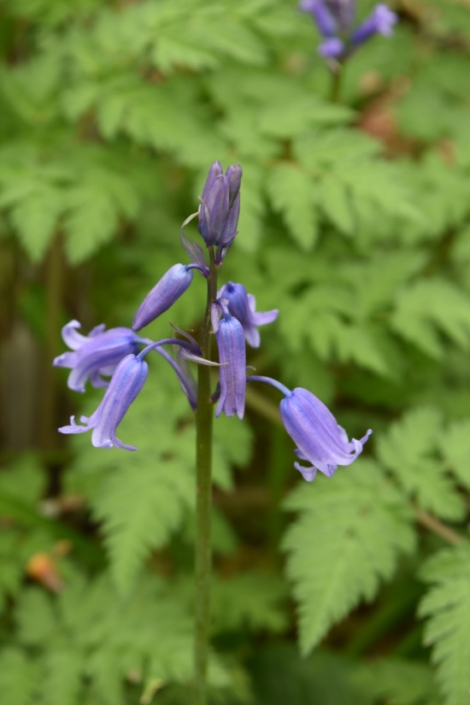 © essentially-england.com
© essentially-england.comWalking back towards the house, we passed through Magnolia Dell and trees in blossom until we reached a bay tree lined avenue with perfectly striped lawn that took us to the entrance of Ascott House.
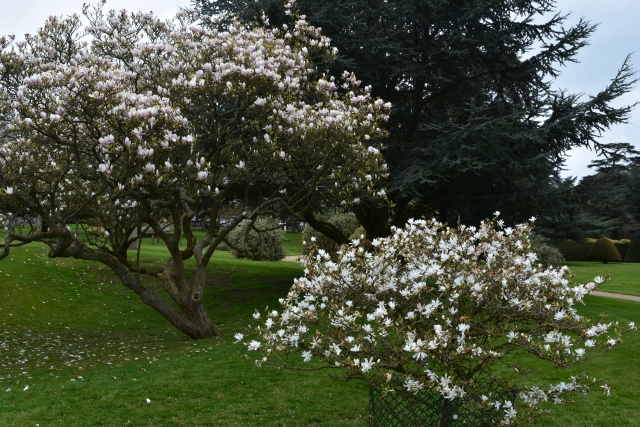 Magnolia Dell © essentially-england.com
Magnolia Dell © essentially-england.com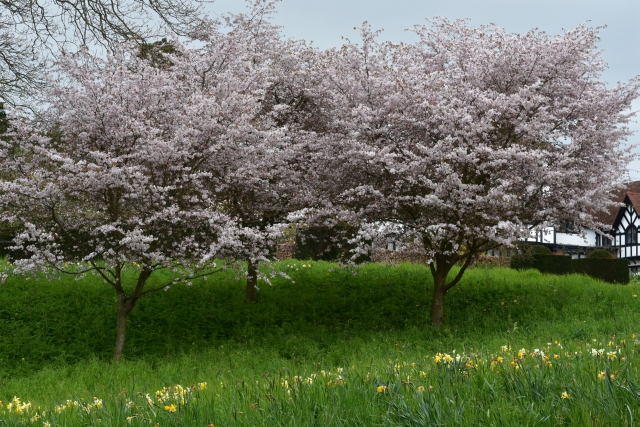 Trees in Blossom © essentially-england.com
Trees in Blossom © essentially-england.comAscott House isn't a museum. It's a family home that's in use for part of the year. And yet, it's brimming with artworks. It starts as you walk into the entrance hall with paintings by Thomas Gainsborough and George Stubbs, and you'll continue to spot treasures as you walk through the house. Despite this, the rooms open to the public feel warm, comfortable, and lived in. The ceilings are not high and are without lighting. Fine paintings and 18th century furniture decorate the rooms. The dining room held a collection of beautiful blue Chinese porcelain, with one modern looking example dating back to around 200BC. Understandably, photography is not allowed in the house.
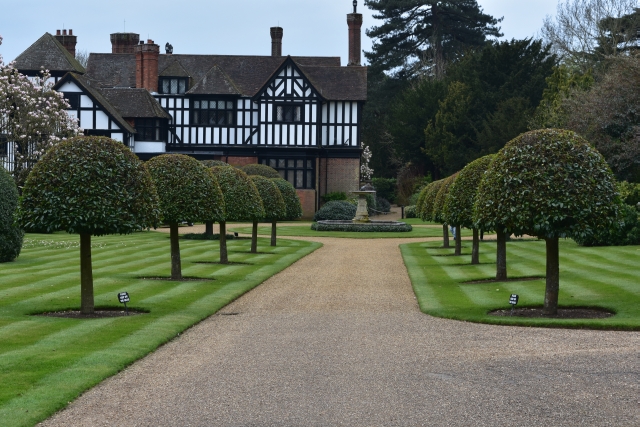 Bay Tree Lined Avenue
Bay Tree Lined Avenue © essentially-england.com
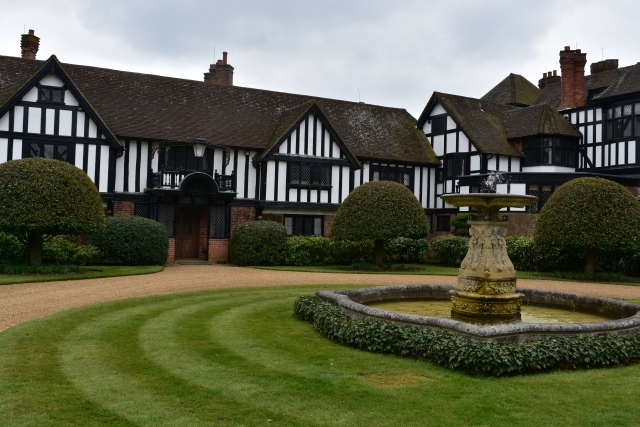 Entrance to Ascott House
Entrance to Ascott House © essentially-england.com
So now back to our initial first impression. Should we have visited Ascott House and gardens earlier in the year ? Yes, because then we would have the bright yellow daffodils looking there best, but then maybe the tulips would not have been on show, the trees not in blossom, and we might not have spotted the fritillaries as they are rather rare to find. And what happens to the gardens during the summer months ? It appears this is a garden that needs visiting at different times of year.
Planning Your Day Out at Ascott House and Gardens
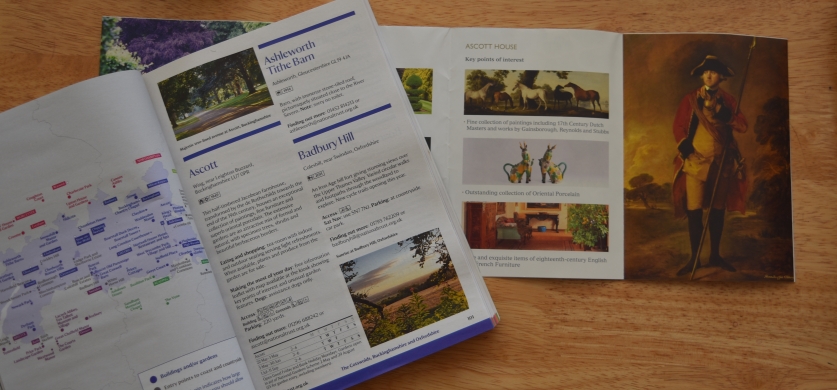 Planning Your Visit to Ascott House and Gardens © essentially-england.com
Planning Your Visit to Ascott House and Gardens © essentially-england.comOur weekday visit was mostly crowd free, but it's the sort of place
we would expect to get very busy at weekends and during school holidays. Taking a little care when planning your visit to Ascott House and gardens will make for a smoother visit. Opening times vary between March and September. We would also recommend that you get there as early as possible as there's so much to explore! We actually ran out of time and didn't get to see all the garden.
The opening times are given in this link to the National Trust website.
Return from our Ascott House and Gardens page to the things to do in England page.
